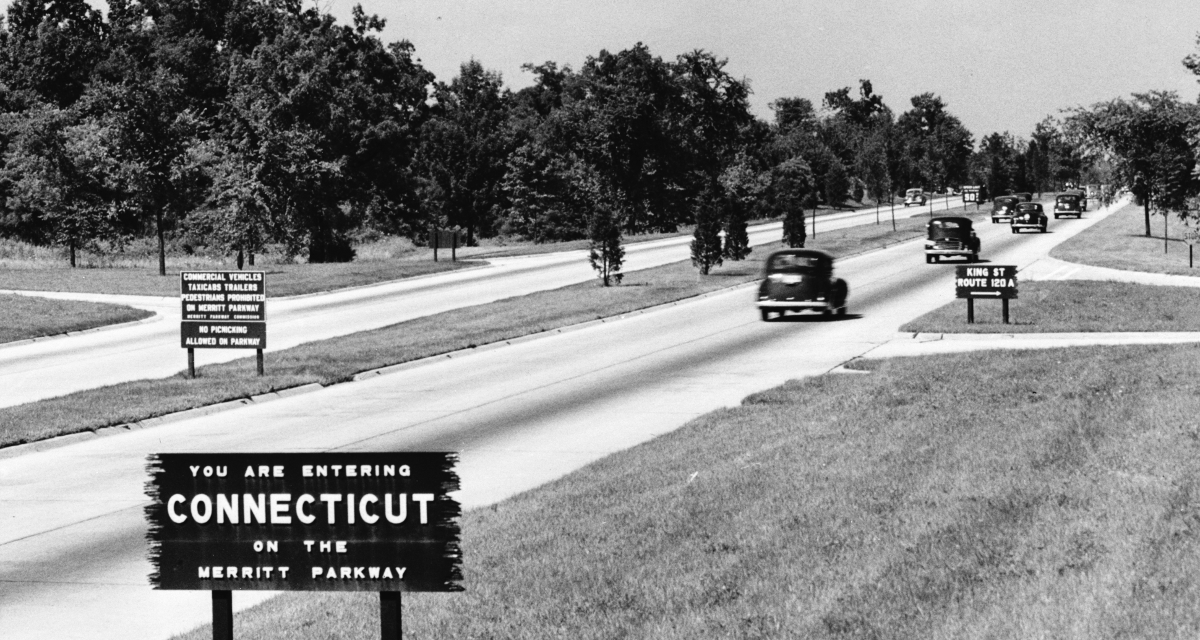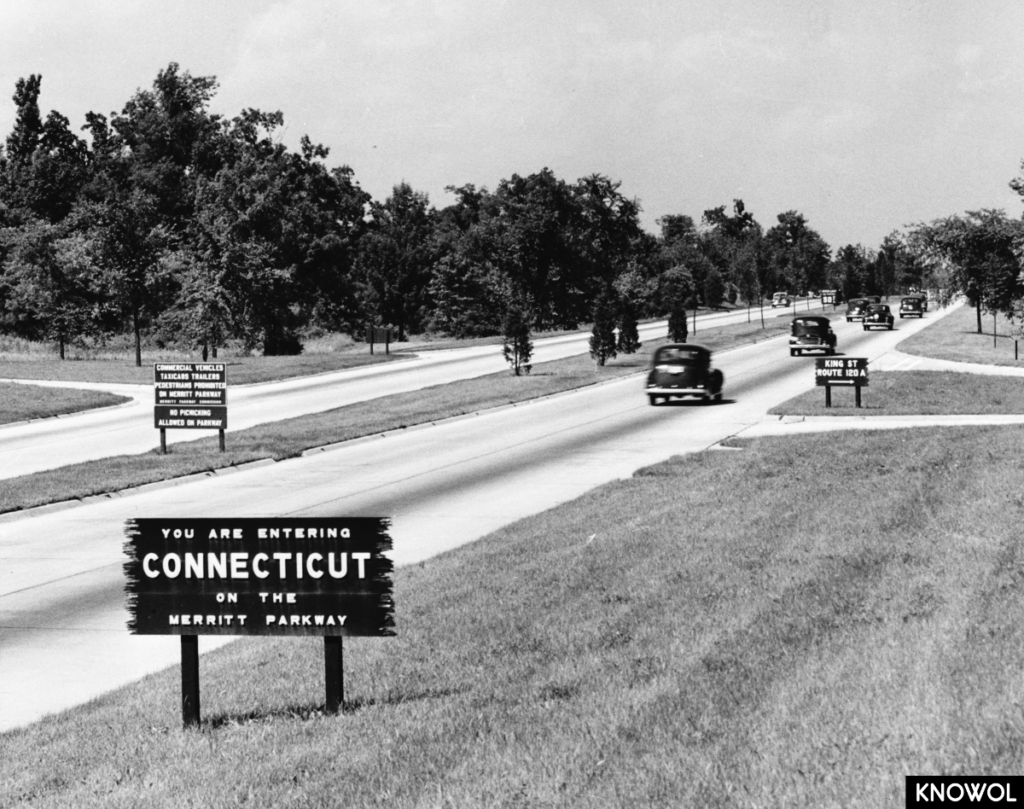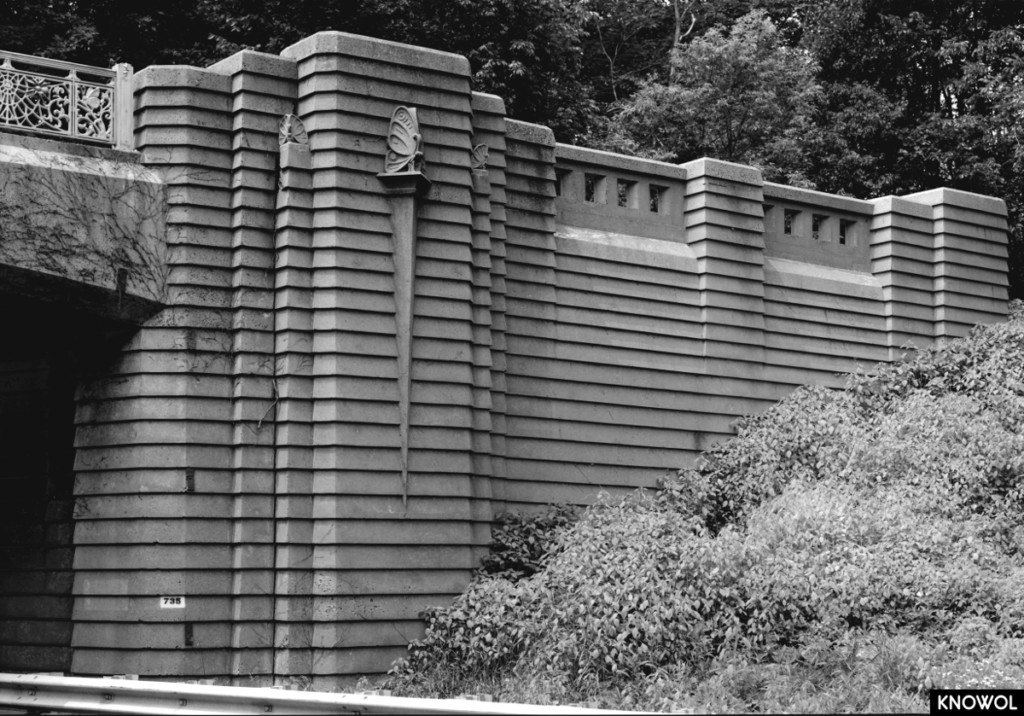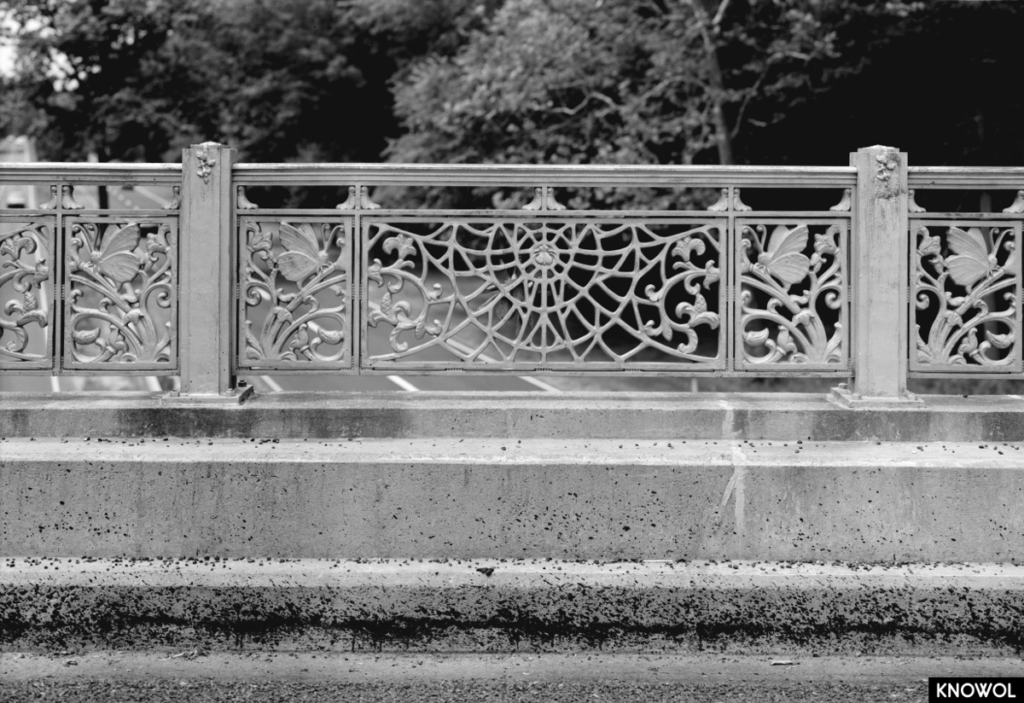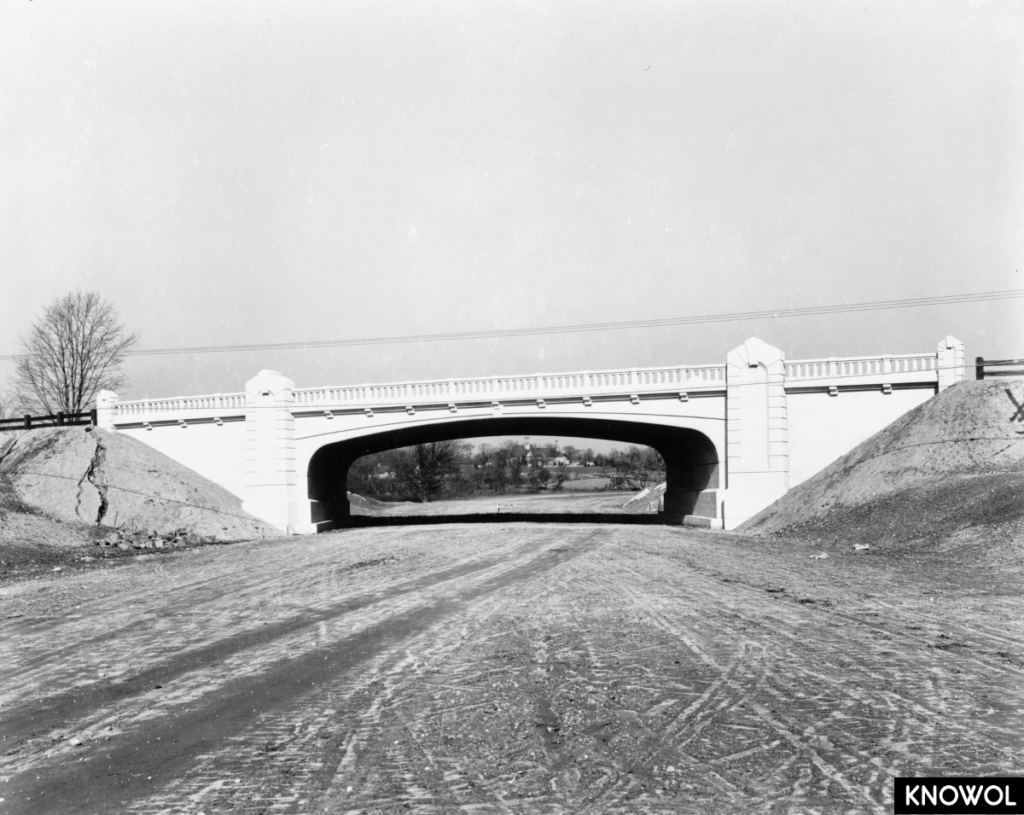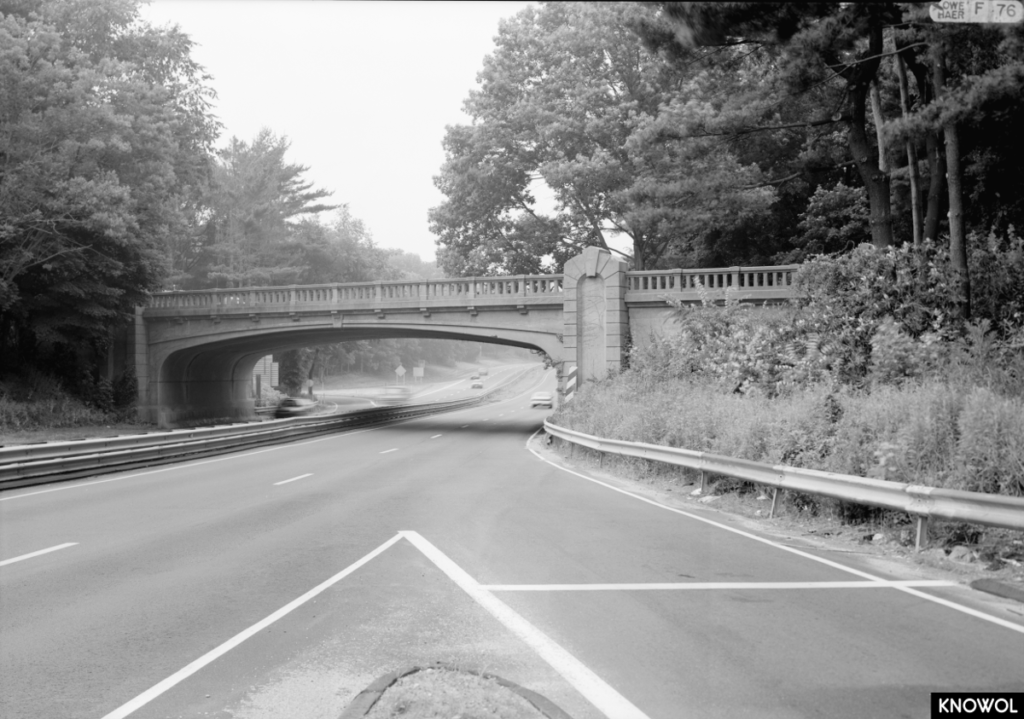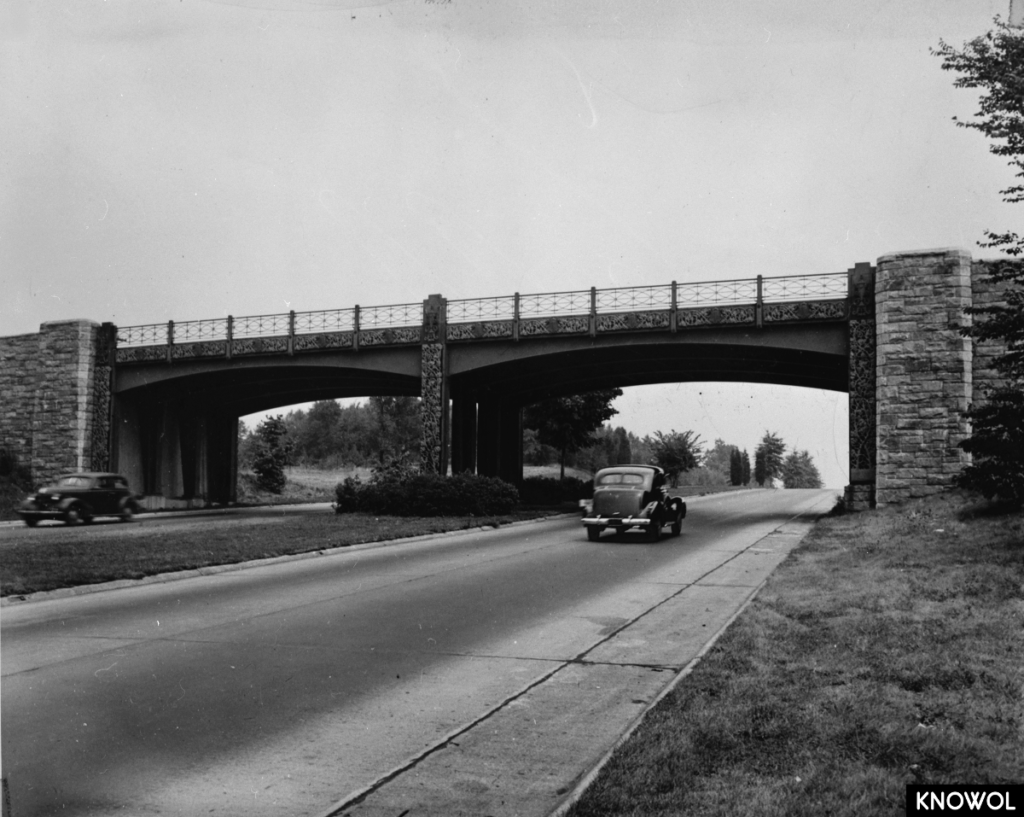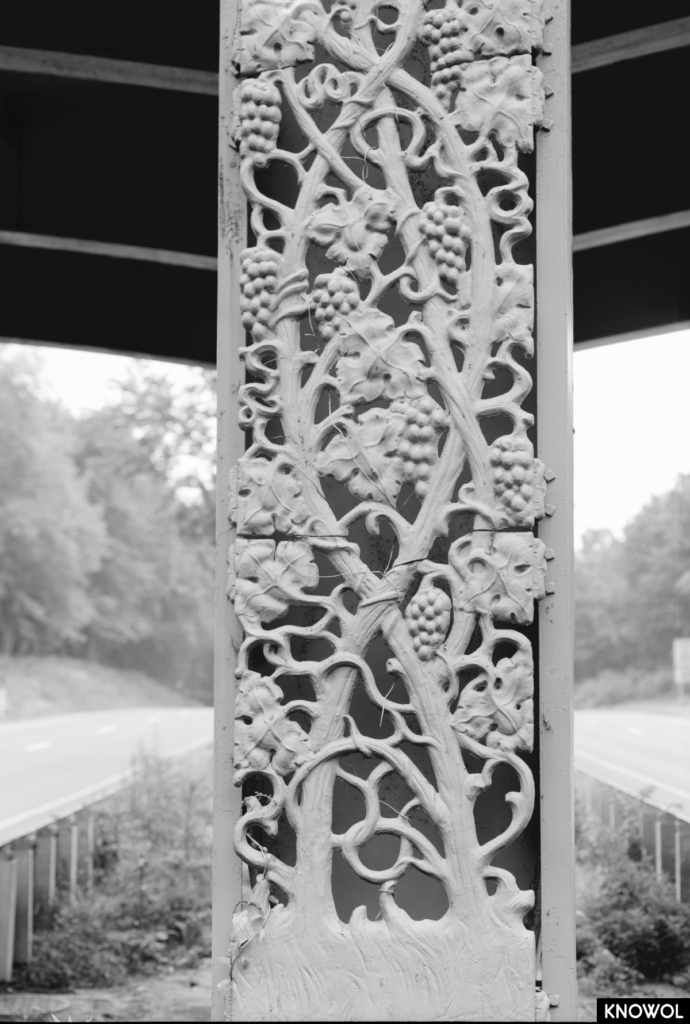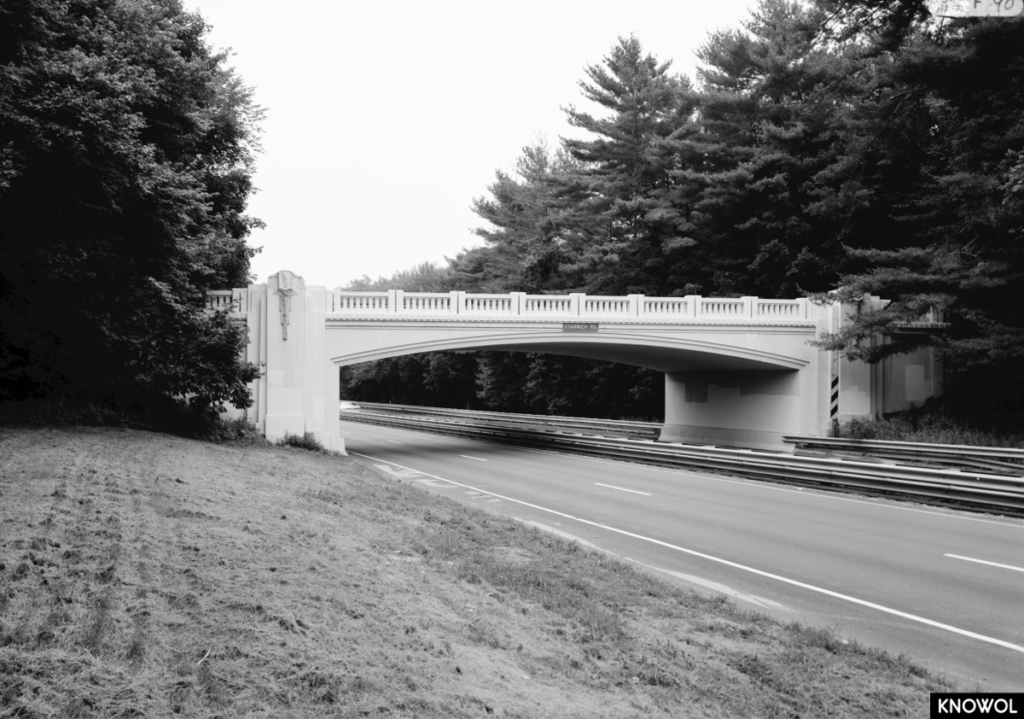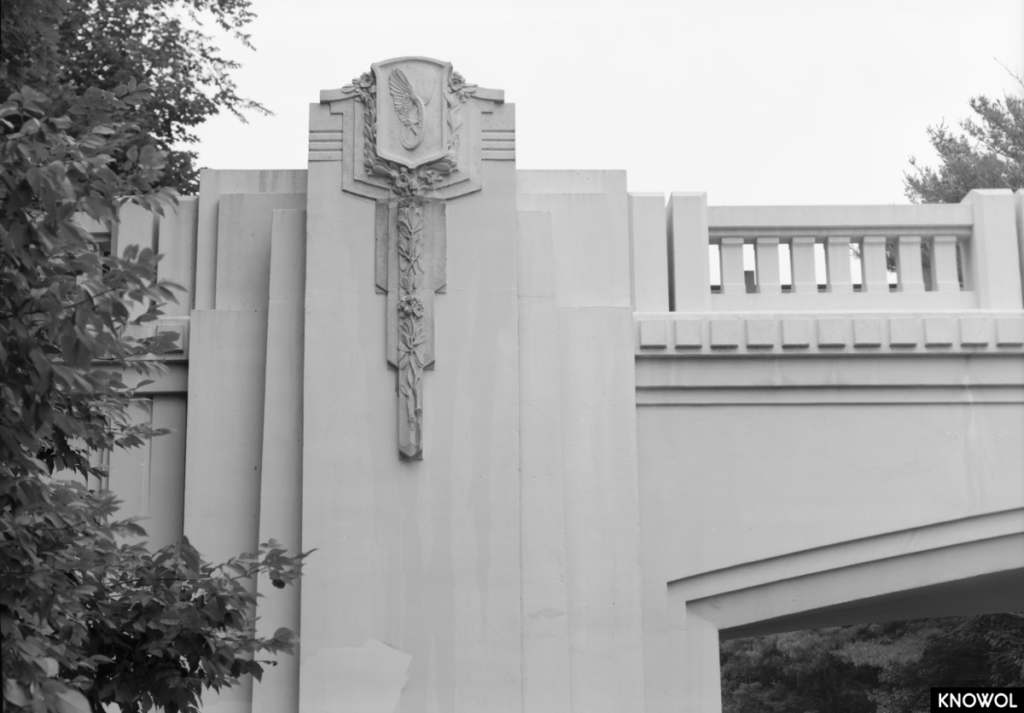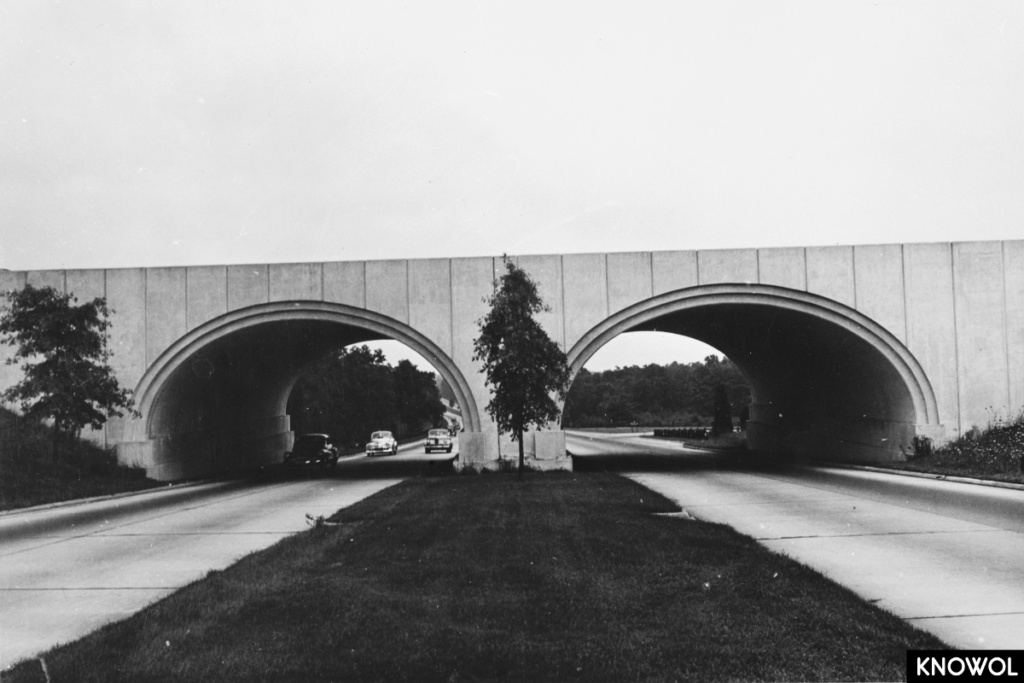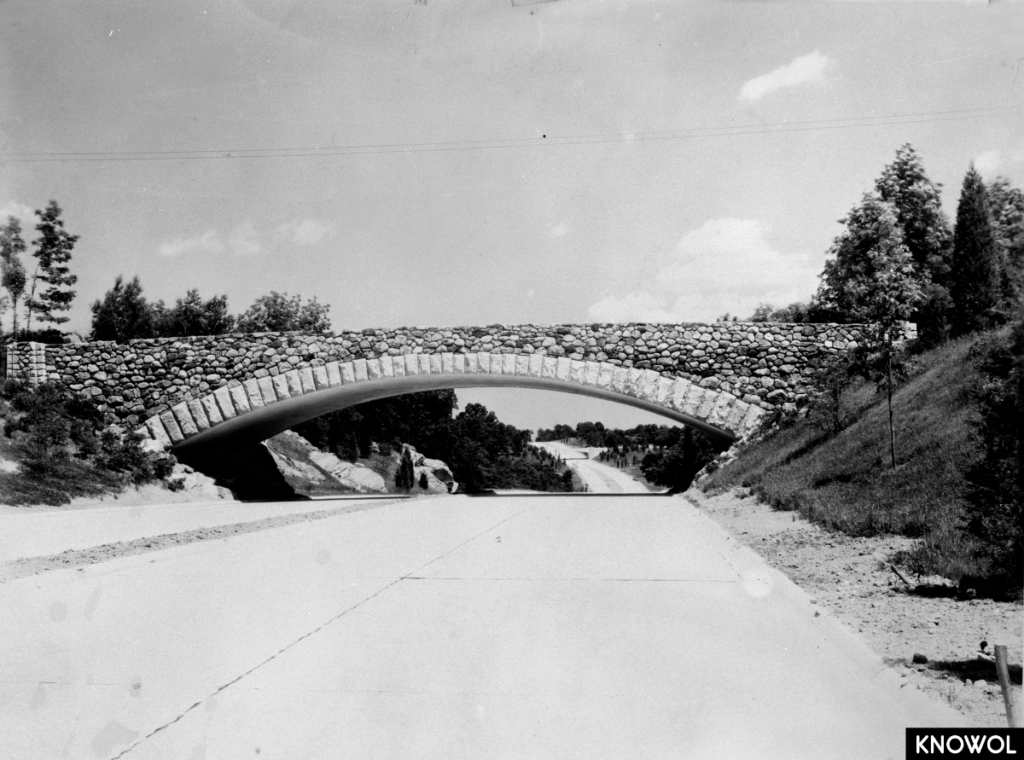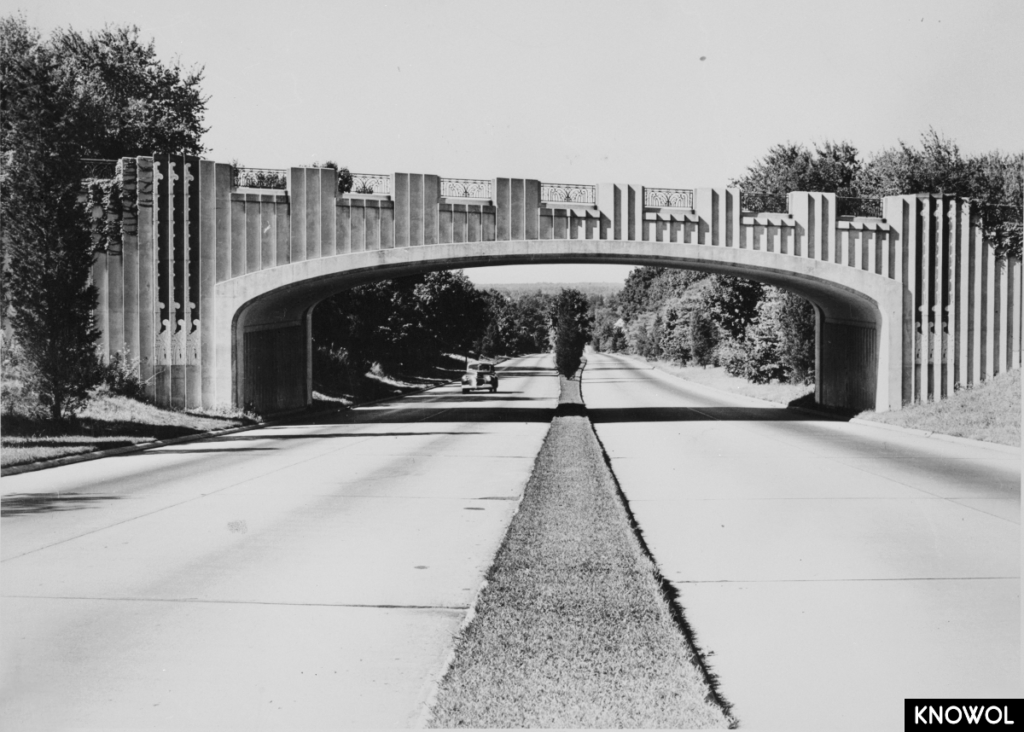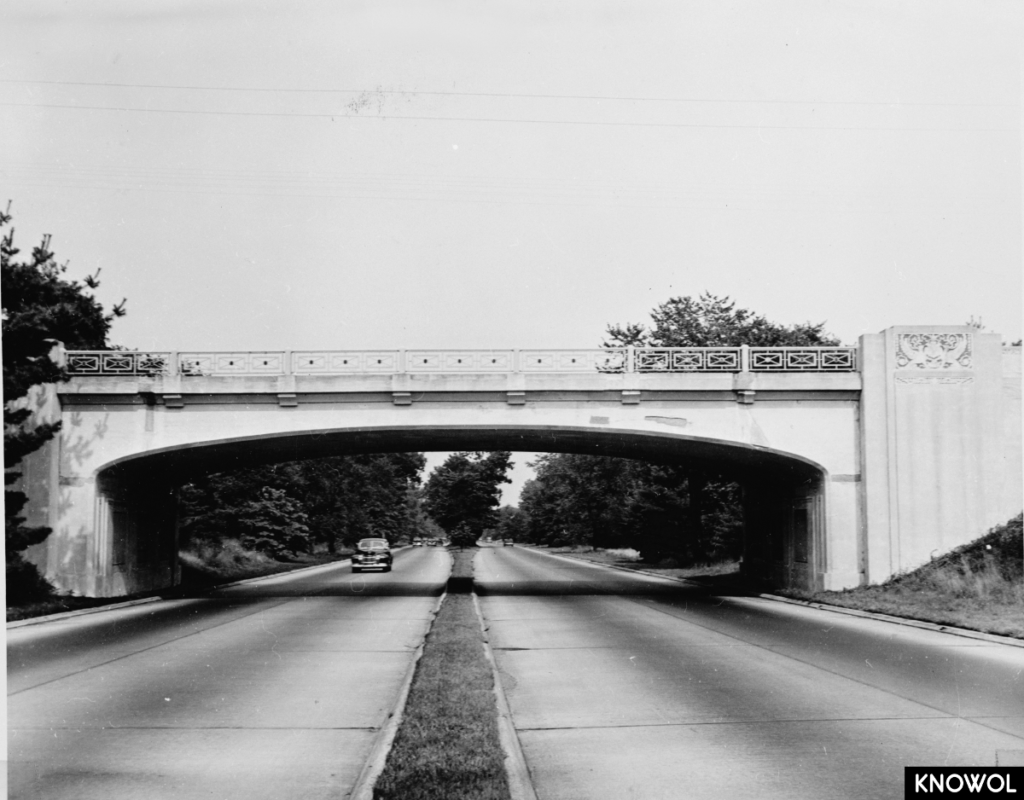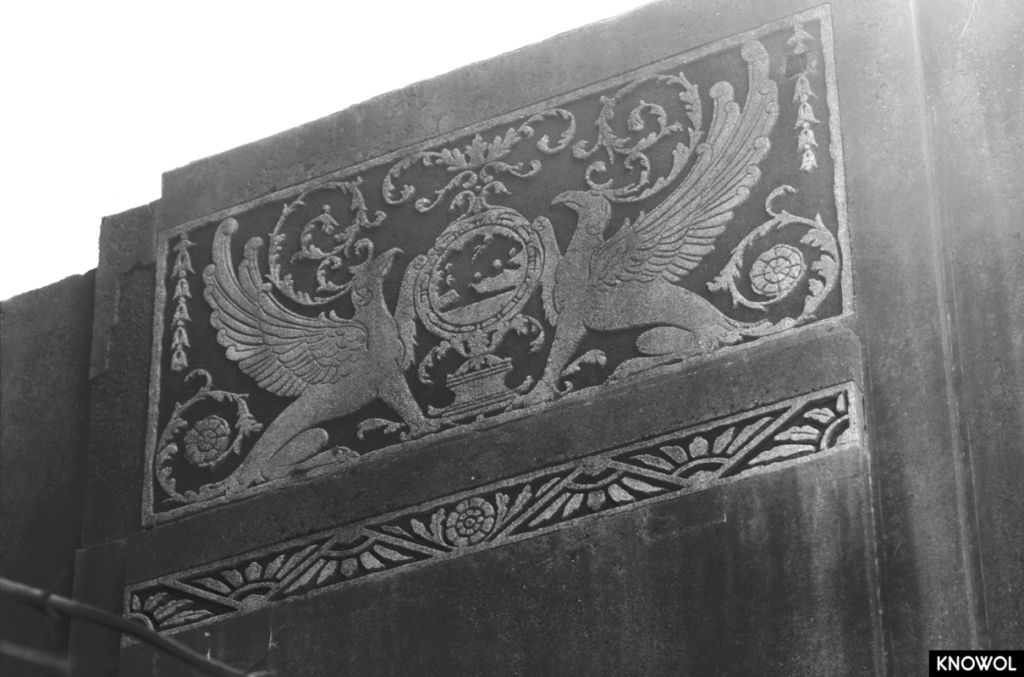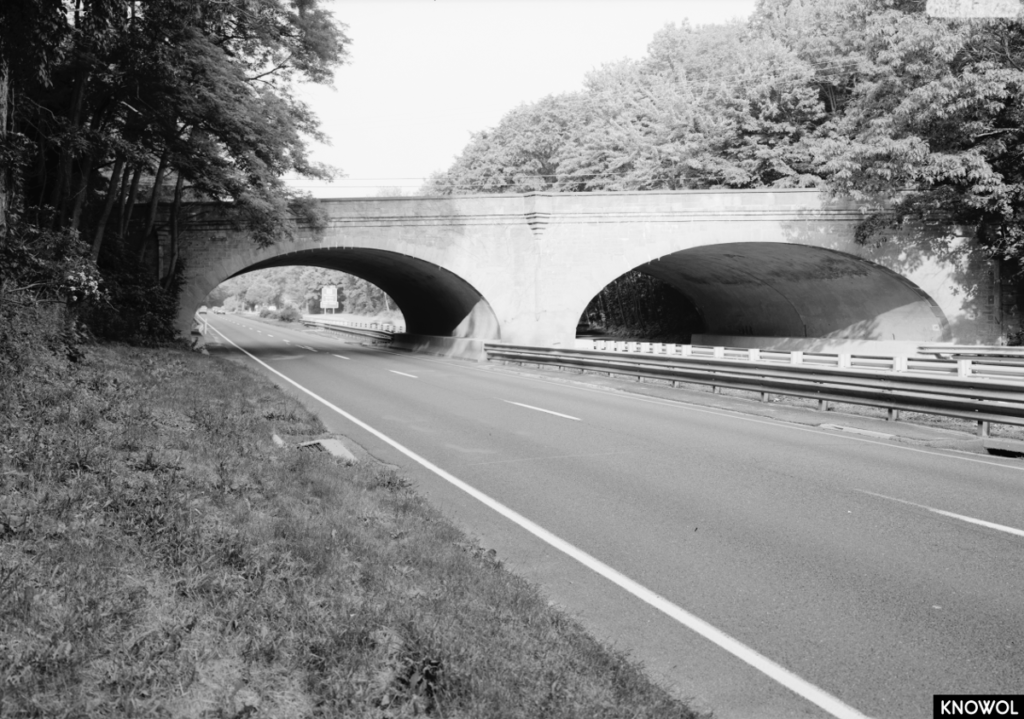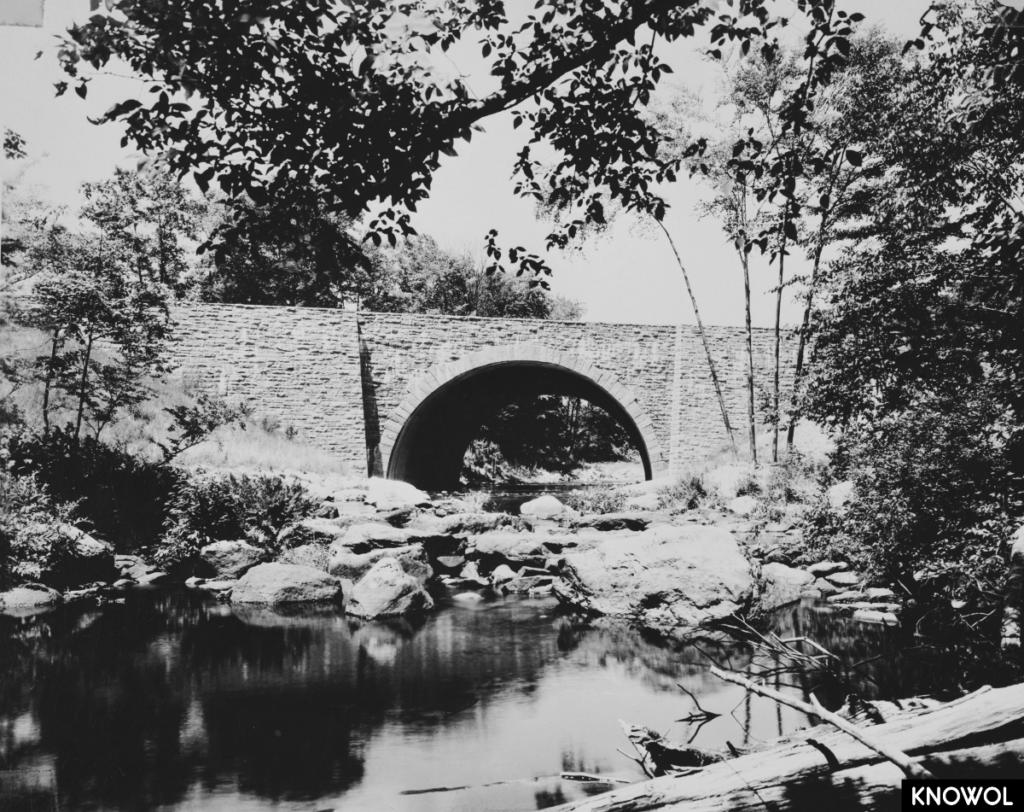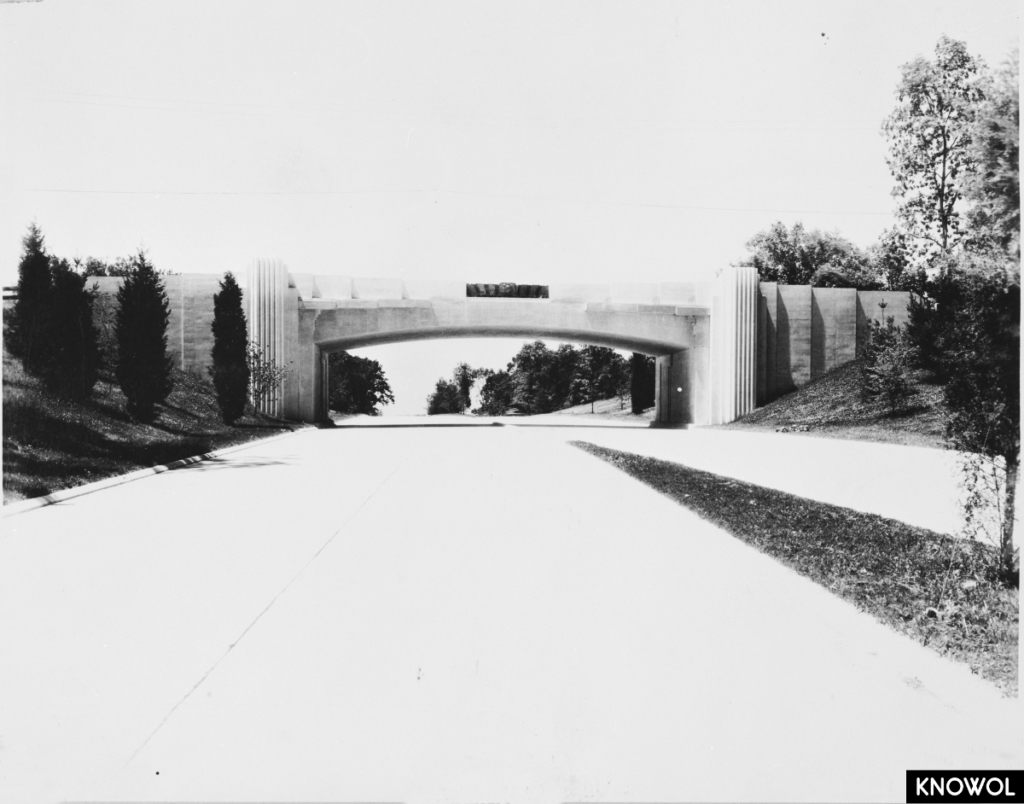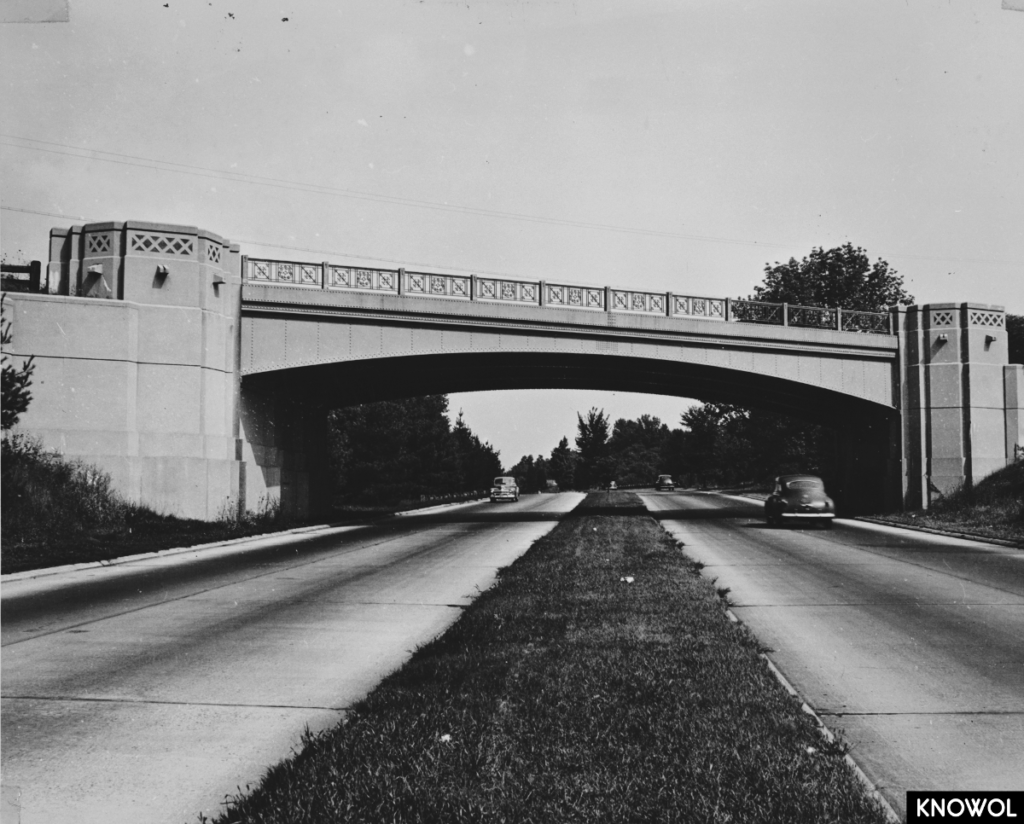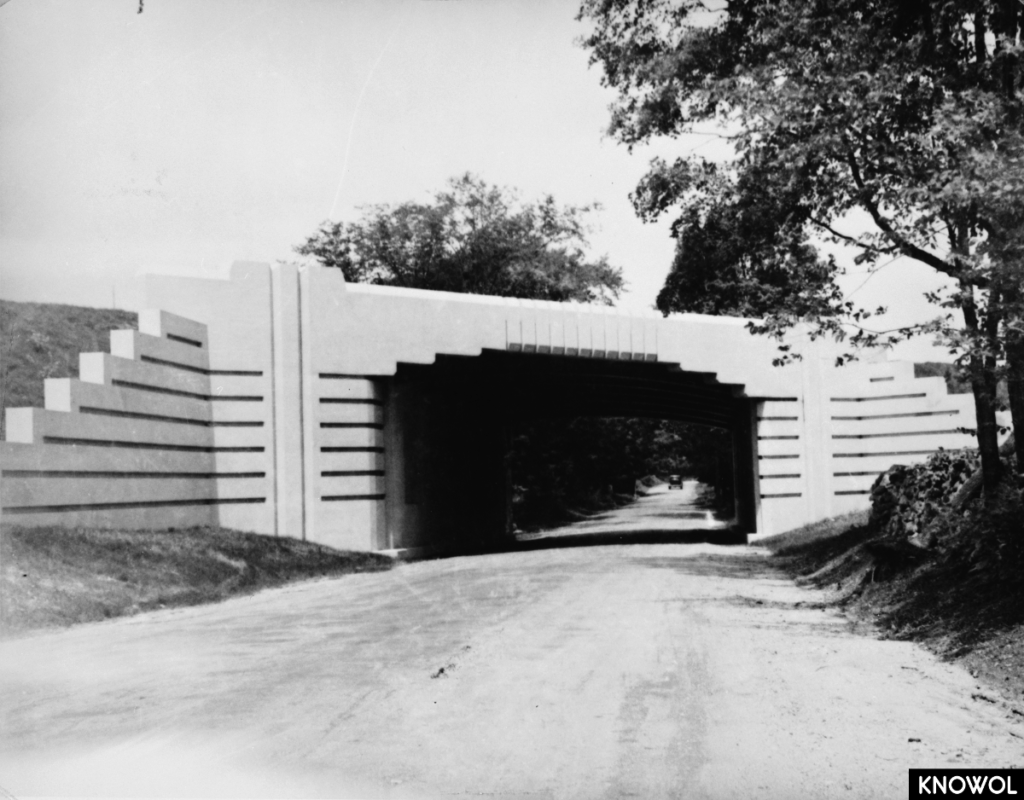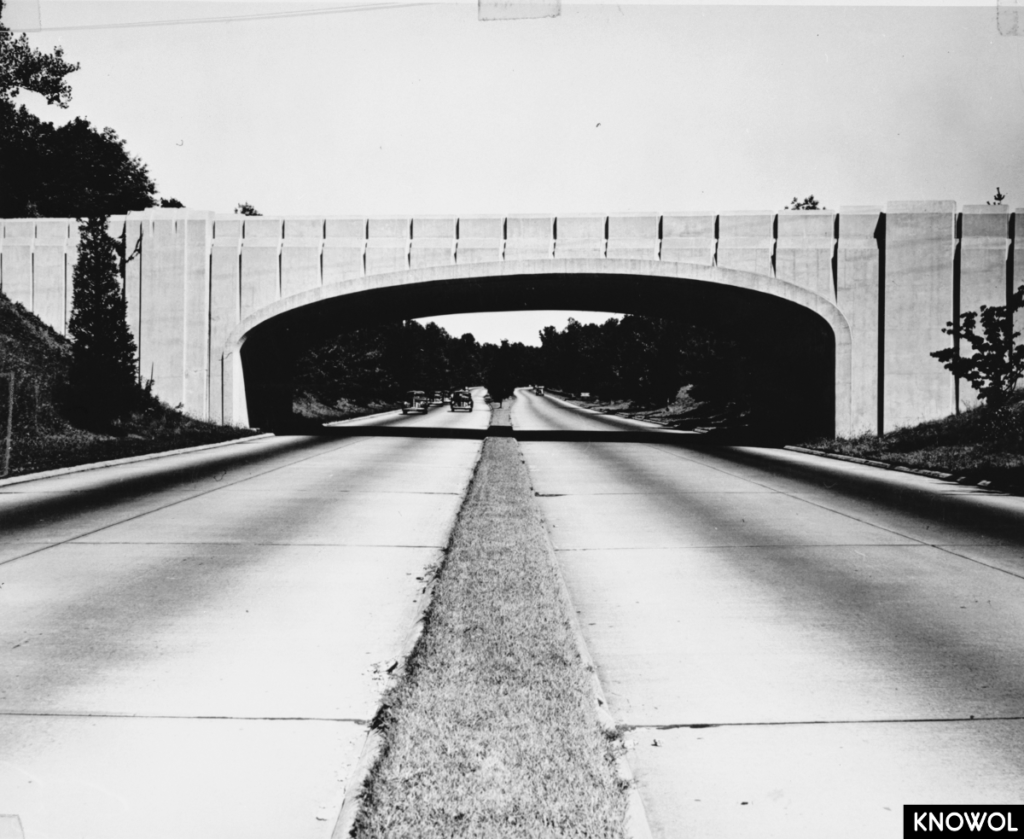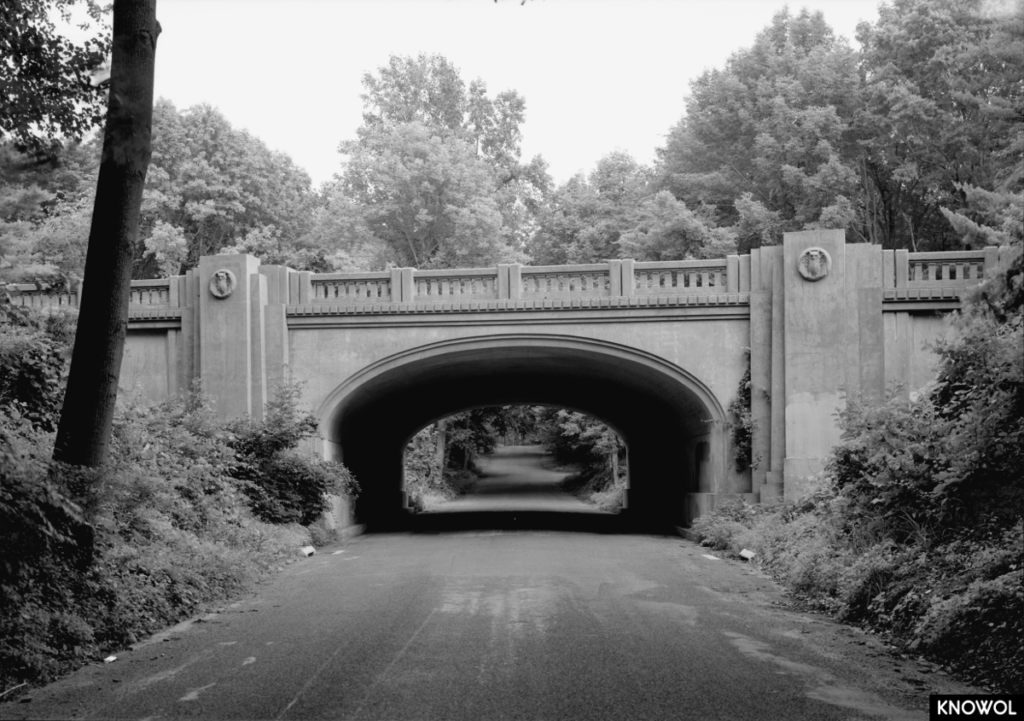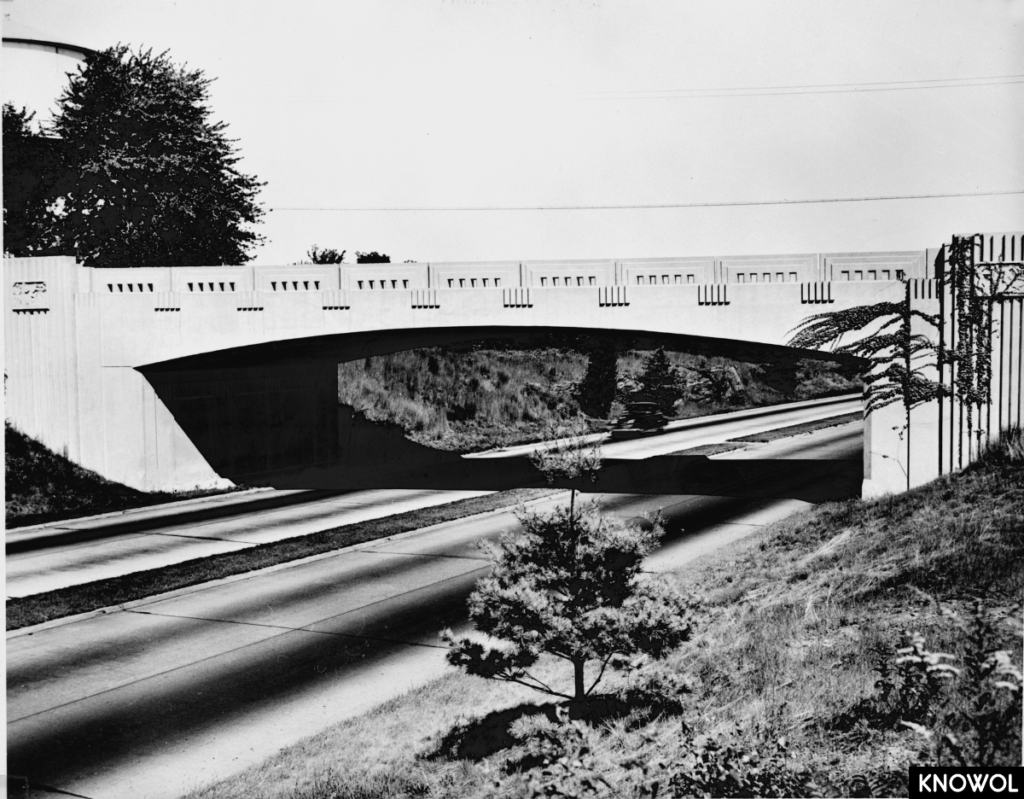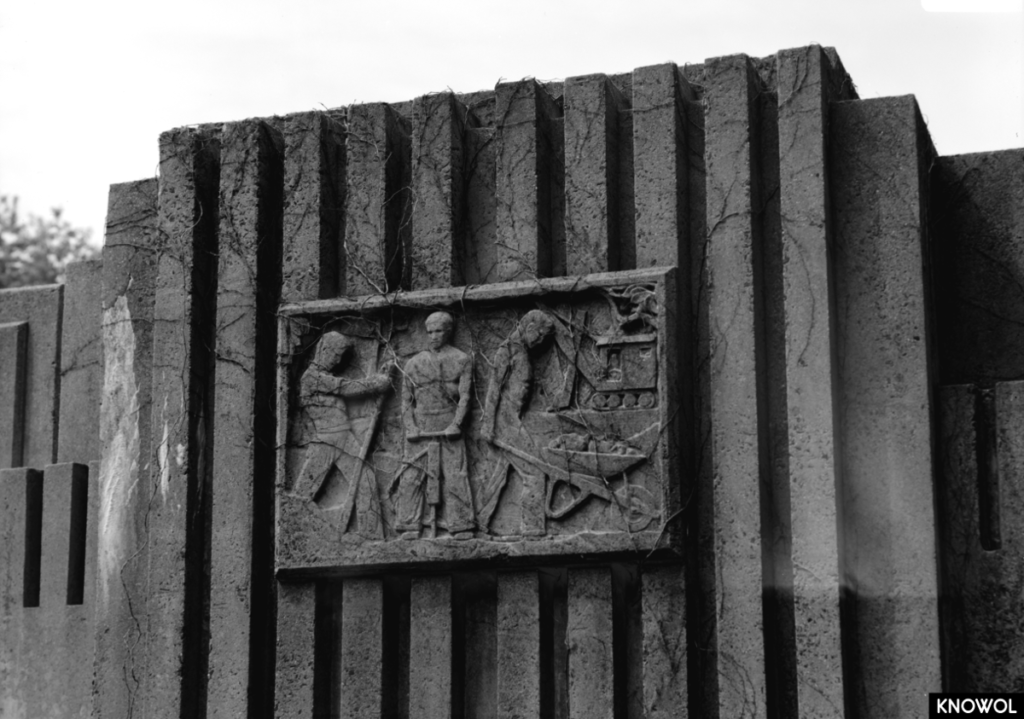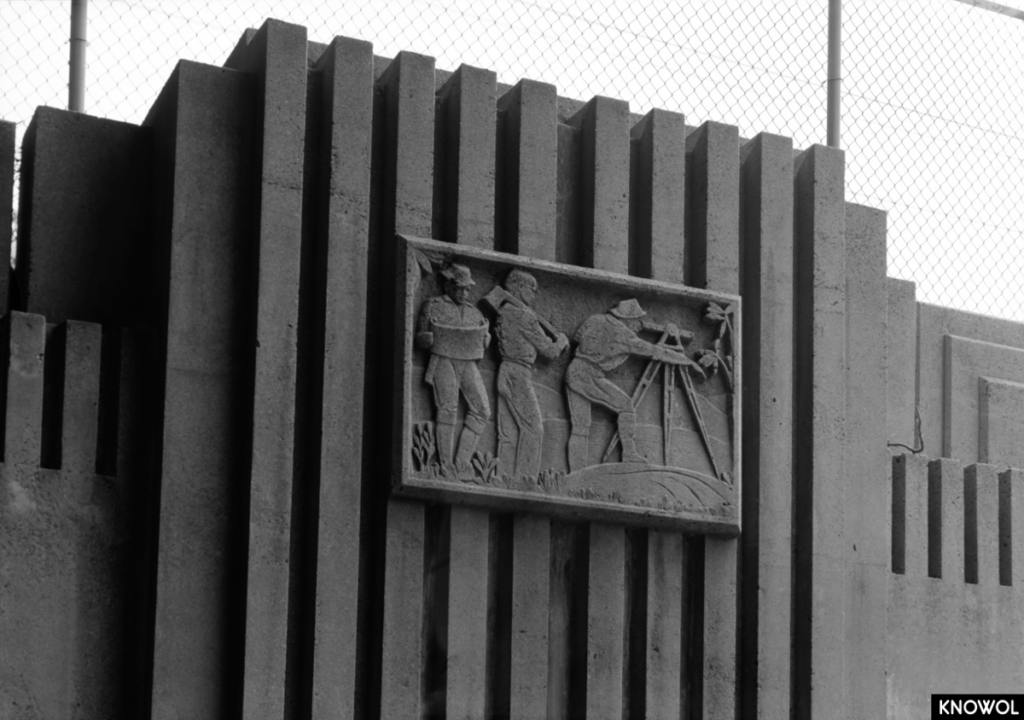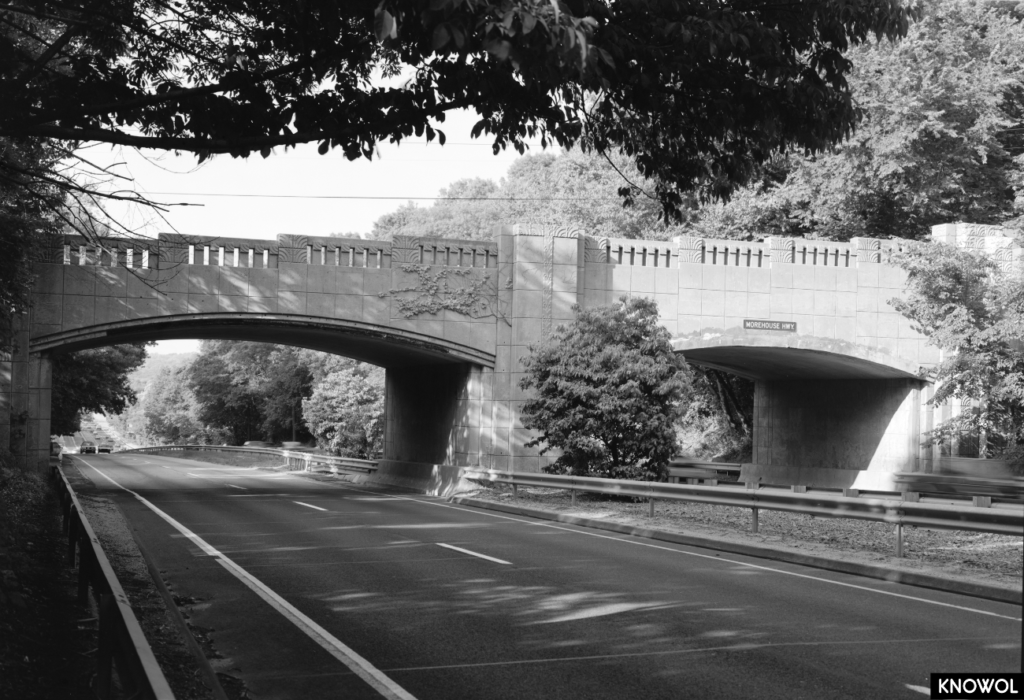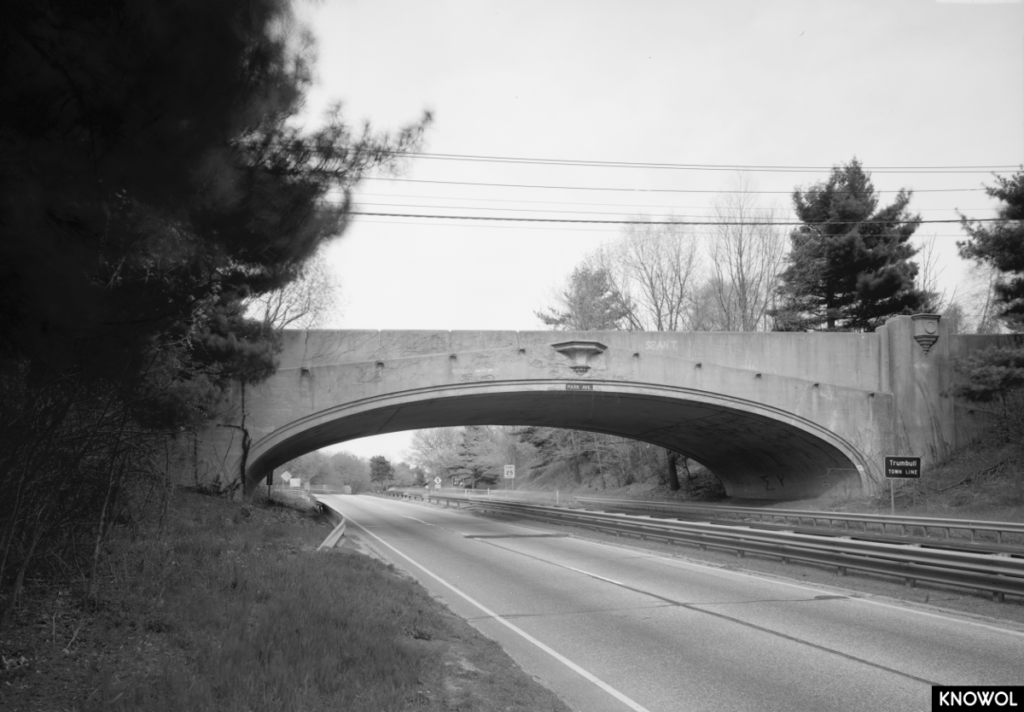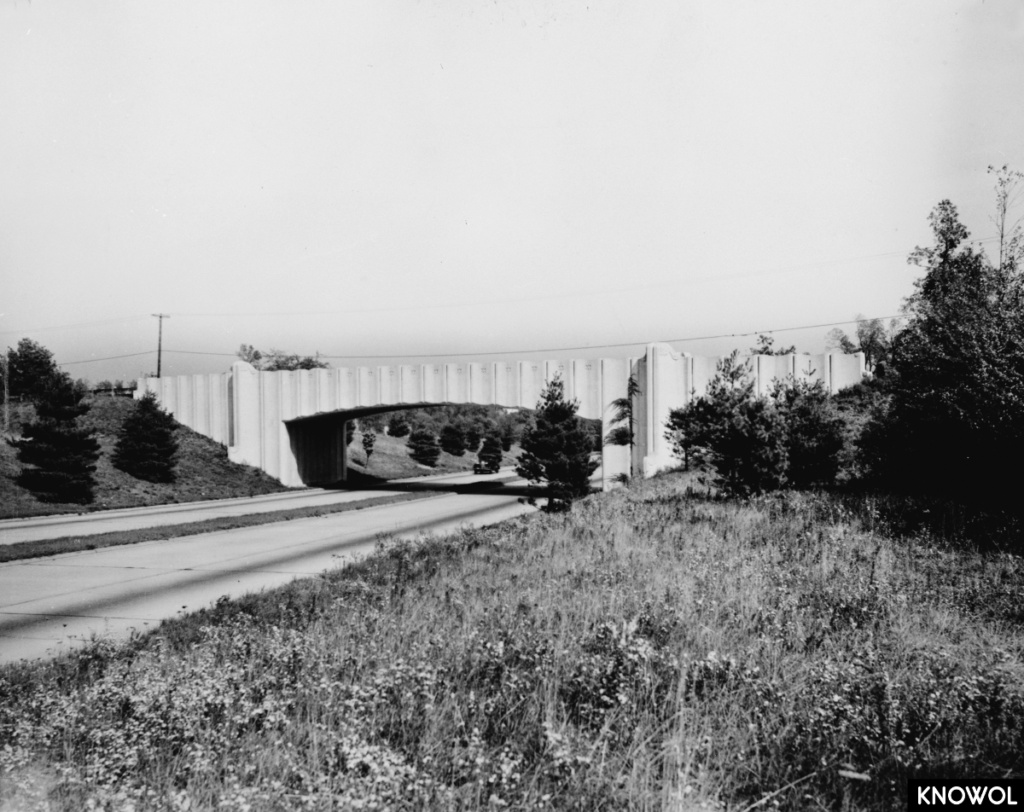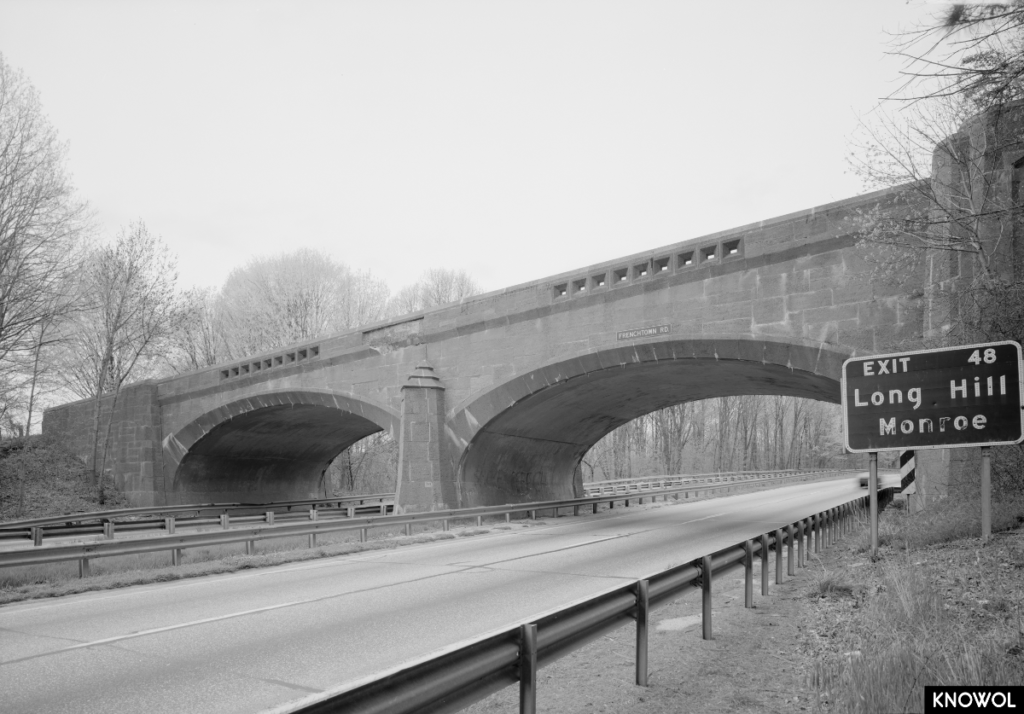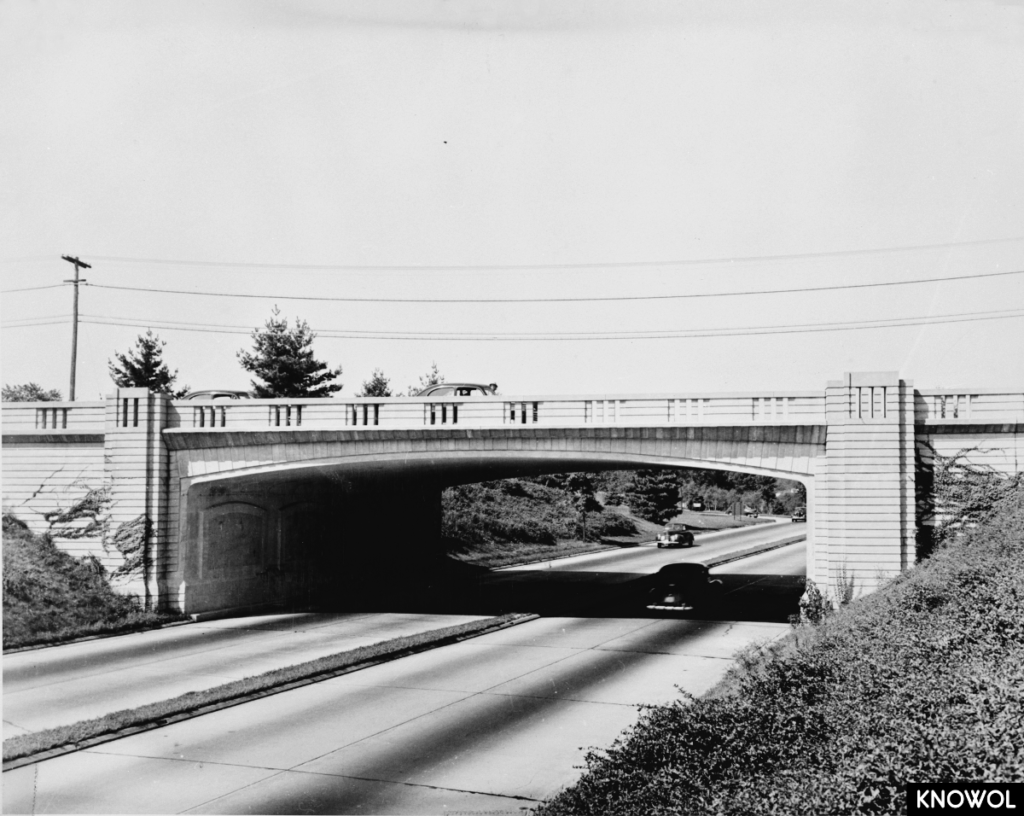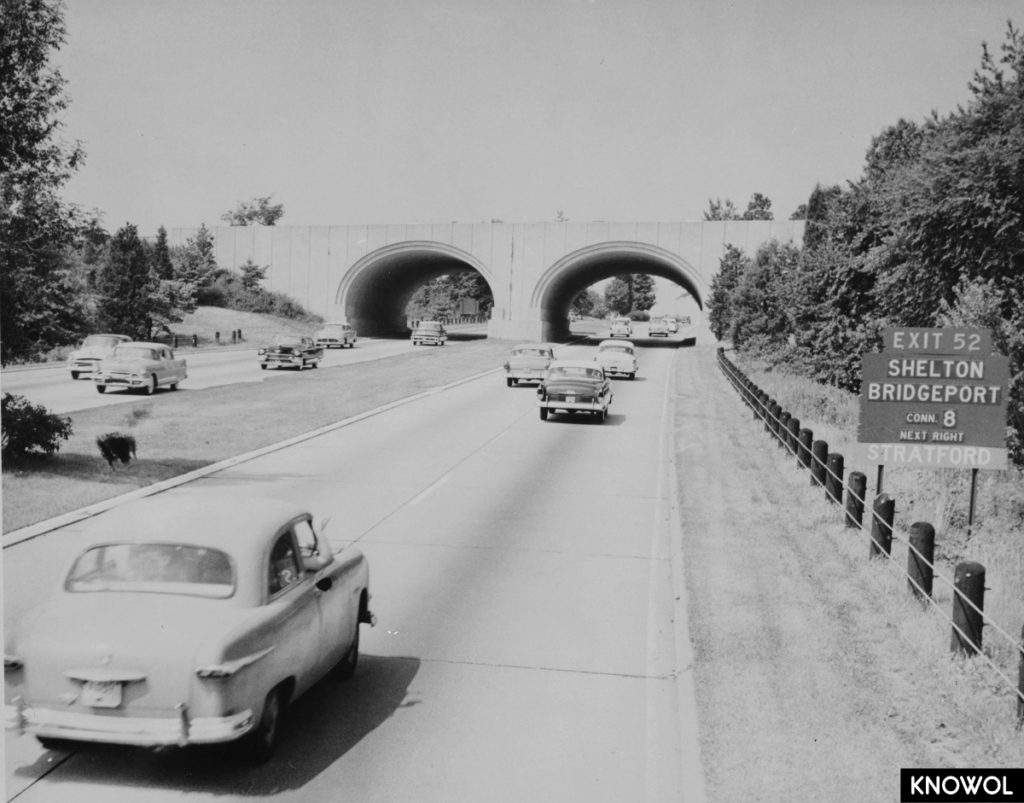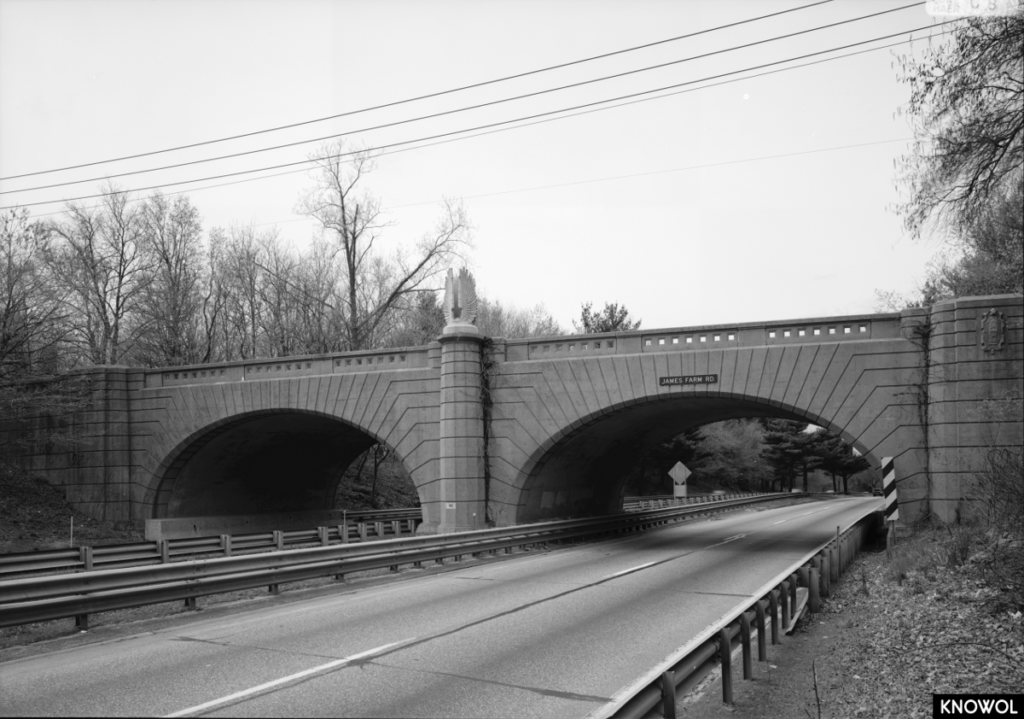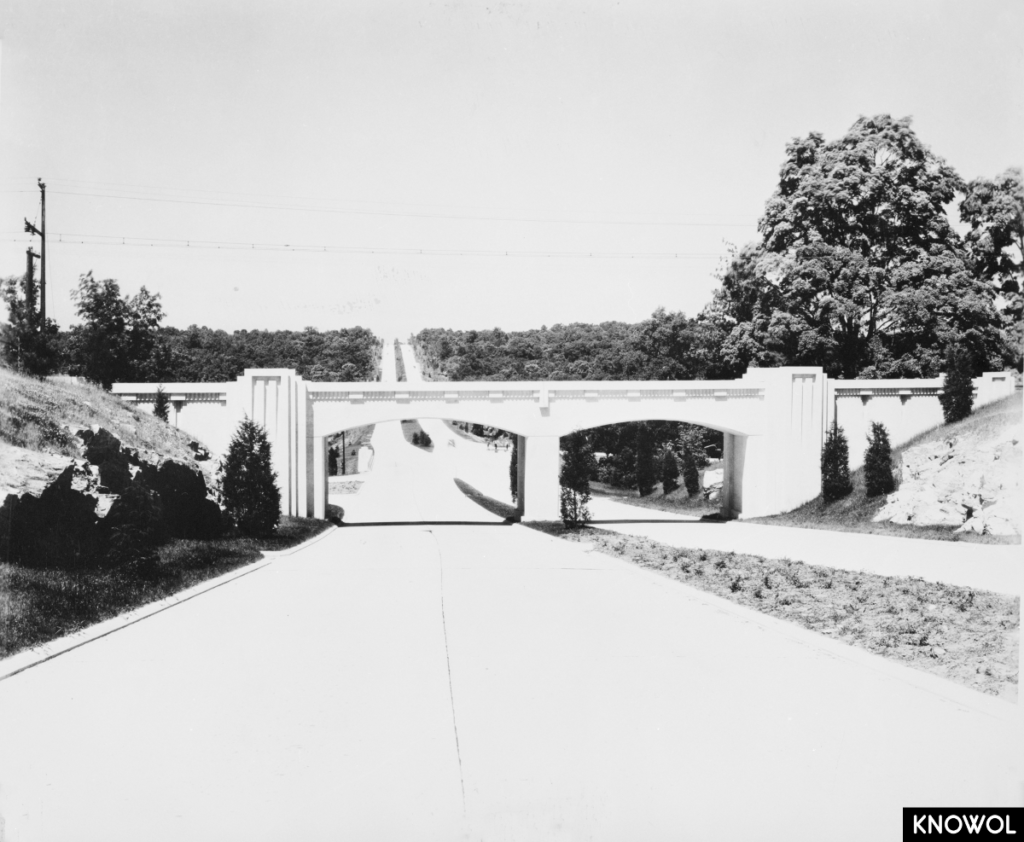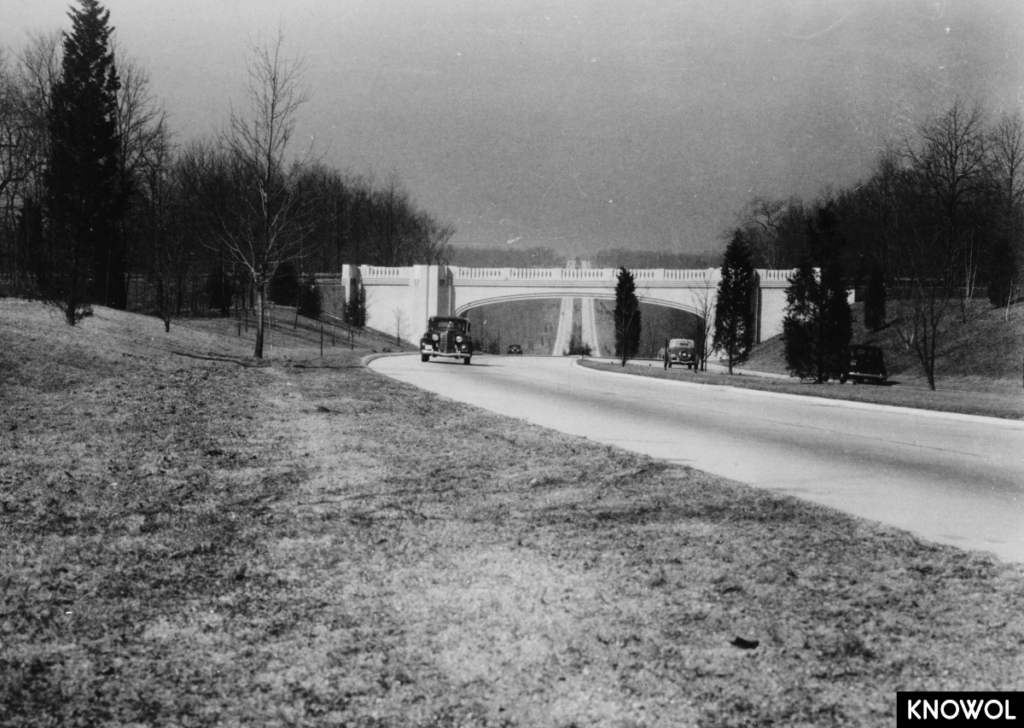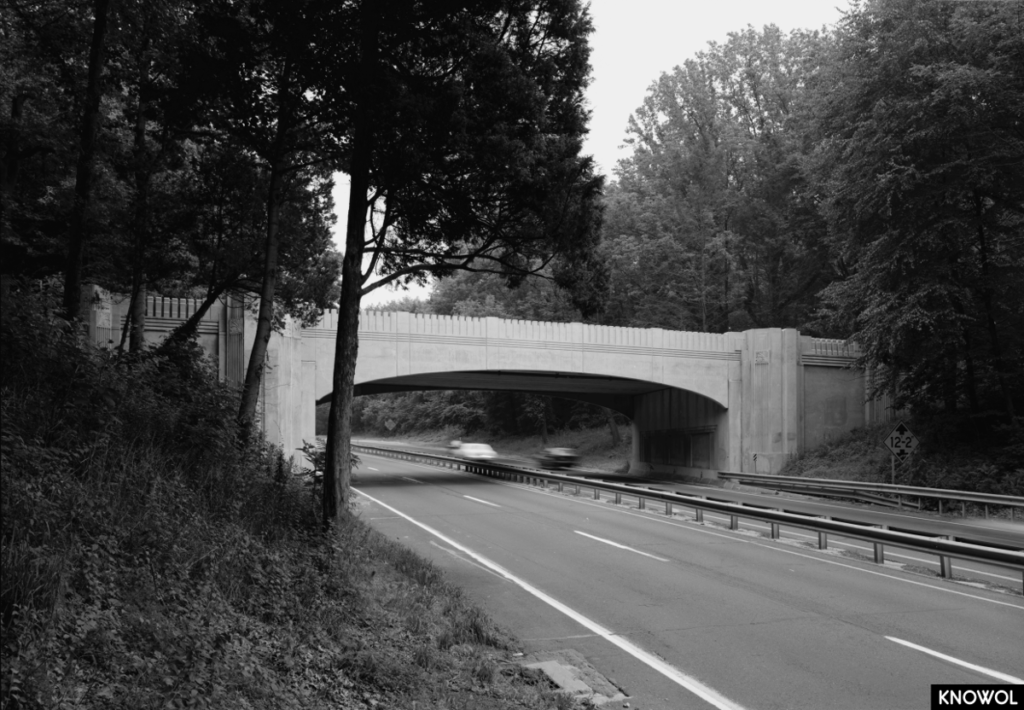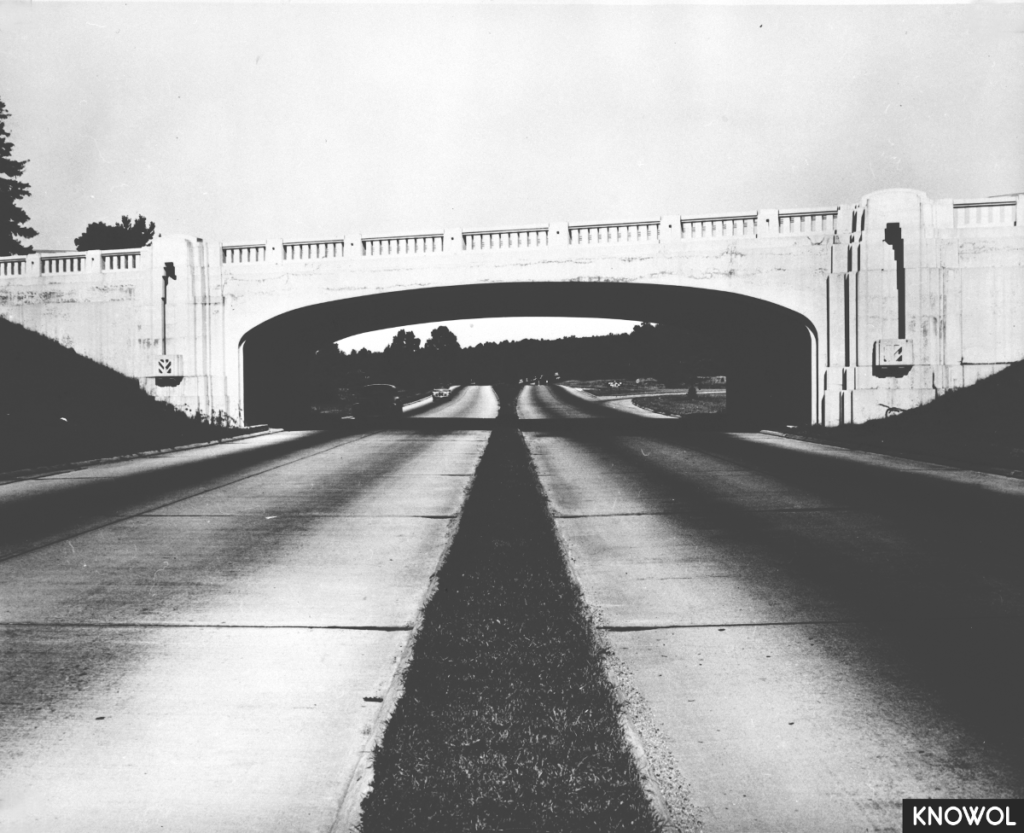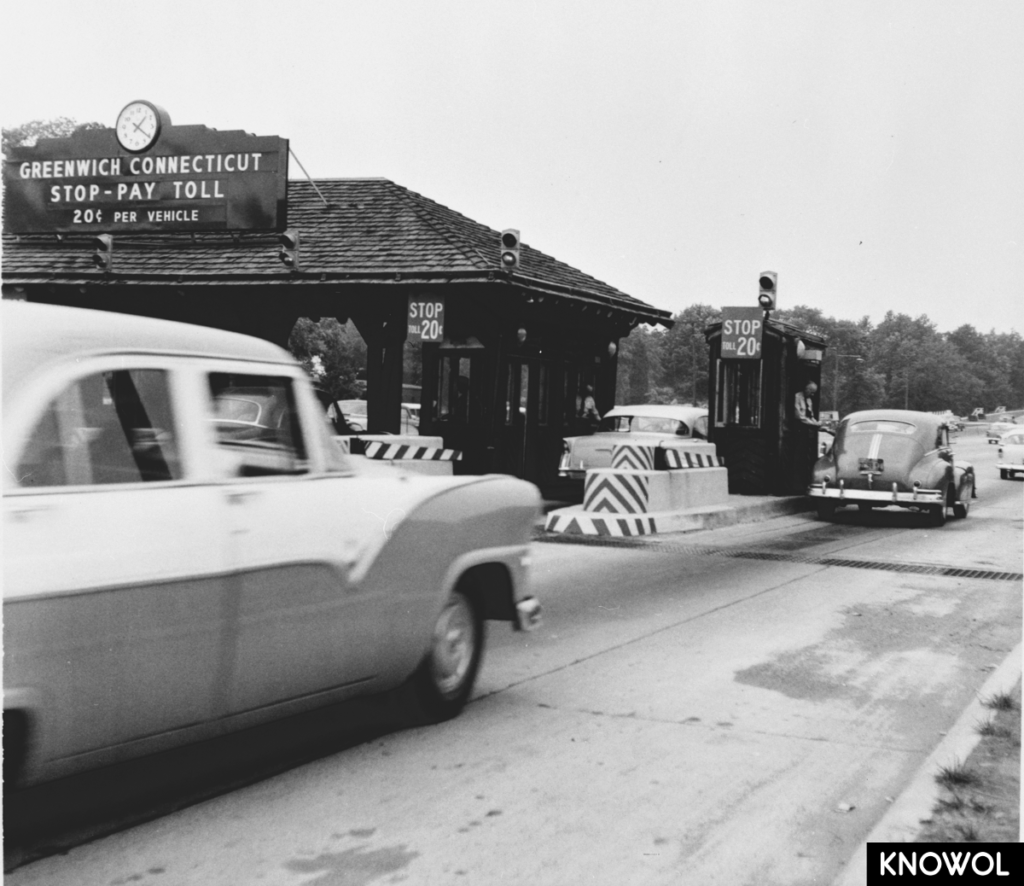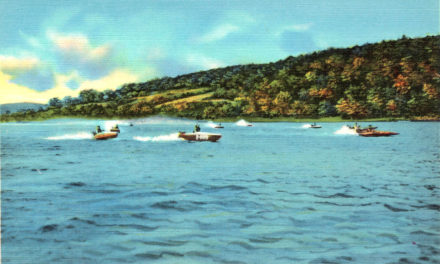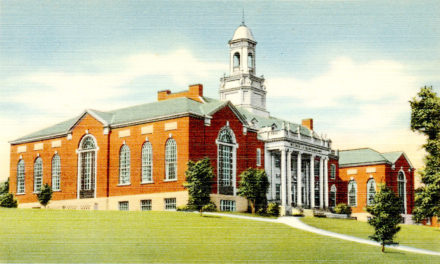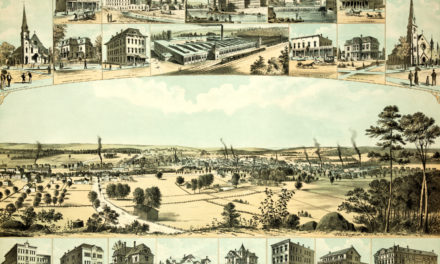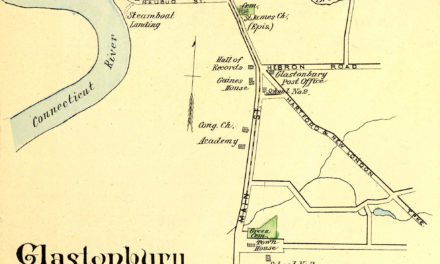The Merritt Parkway was the first divided-lane, limited-access highway in Connecticut. As one of the first roads to combine the aesthetics of scenic and recreational parkways with the efficiency of high-speed motorways, “the Merritt” represented a significant development in the evolution of American highway design.
The ornamentation of the Merritt’s bridges introduced commercial architectural styles such as Art Deco and Art Moderne into a new context. By improving access to New York City, the Merritt Parkway played a crucial role in the rapid commercial and residential development of Fairfield County in the 1930’s and 1940’s.
Welcome to Connecticut’s Merritt Parkway
The Merritt Parkway originally began in Greenwich, CT and ran 38 miles to Stratford, CT. The bridges of the Merritt Parkway were largely inspired by the Art Deco and Art Modern architectural styles of the 1930’s.
Merwin’s Lane Bridge
Experimental forming techniques were employed to create the ornamental characteristics of the bridges. This picture shows Merwin’s Bridge in Fairfield, Connecticut. Ornamental butterflies adorn the pillars and ironwork.
Butterfly’s on Merwin’s Bridge
The experimental designs combined with the philosophy of incorporating architecture into bridge design and the individuality of each structure, makes the Merritt Parkway bridges distinctive. Butterflies adorn the Merwin Bridge on both the pillars and the decorative iron railing.
Round Hill Road Bridge in 1935
George L. Dunkelberger (1891 – 1960), the architect of the Merritt Parkway’s bridges, wanted to recreate the scenic openness of the countryside surrounding the Parkway. This picture shows the Round Hill Road Bridge in Greenwich shortly after it was constructed.
Round Hill Road Bridge in 1968
Only 30 years after the bridge was constructed, vegetation had already obscuring much of the bridges original design. Development has encroached on the land surrounding the Merritt Parkway, and much of the open space surrounding the original parkway has been lost.
Lake Avenue Bridge
Lake Avenue Bridge spans the Merritt Parkway at the 4.71 mile mark in Greenwich, CT. The center and side posts have ornamented cast-iron grapevines and urns which you can see in the next picture.
Grape Vines on Lake Avenue Bridge
These grape vines are a nod to the Connecticut State Seal, which has three grape vines in the center, supporting and bearing fruit. Appearing below the the grape vines on the seal is a banner with the state motto: “Sustinet Qui Transtulit” (Latin for “He who is transplanted still sustains”).
Stanwich Road Bridge
The Stanwich Road Bridge spans the Merritt Parkway at the 7.47 mile mark in Greenwich, CT. It has a Bas-relief shield displaying a winged wheel near top of each abutment.
Stanwich Road Bridge Decoration
A Bas-relief shield displaying a winged wheel near the top of each pillar. The winged wheel represents progress and advancement. The Wing is a symbol from the Greek God Mercury, representing speed. The wheel is symbolic of the motor vehicle and the technological advancements of man. Together they mark the Merritt Parkway as a place of “Swift Movement”.
The Old Route 65 Bridge
Some Merritt Parkway bridges have been lost completely. This was the Route 65 Bridge, part of Nichols Ave in Shelton, CT. It was constructed in 1940 and demolished in 1979.
Guinea Road Bridge
The Guinea Road Bridge spans the Merritt Parkway in Stamford, CT. Also known as the Rocky Craig Road Bridge. The bridge face is composed of rock-faced rubble stone.
North Avenue Bridge
The North Avenue Bridge spans the Merritt Parkway in Wesport, CT. It’s an Art Deco bridge featuring ferns, flowers, and a snail depicted in sgraffito panels at the top of the low protective wall.
Grumman Avenue Bridge
This bridge spans the Merritt Parkway in Norwalk, CT. It was originally called the “Grummond Hill Road Bridge”.
Griffin Relief Sculpture
Detail of the ornamental characteristics of the Grumman Ave bridge. The neoclasical griffons are Sgraffito panels and flank the Connecticut State Seal.
Newton Turnpike Bridge
The Newtown Turnpike Bridge was done in the French Renaissance Revival. The bridge was made from a concrete cast and then treated to imitate ashlar stone. It was inspired by, and designed to look like a fortified bridge.
Rippowam River Bridge
Spanning Rippowam River in Stamford, Fairfield County, CT
Newfield Avenue Bridge
The Connecticut State Seal adorns the center of this bridge, which spans the Merritt Parkway in Stamford, CT.
Clinton Avenue Bridge
This bridge spans the Merritt Parkway in Westport, CT. The Tower-like abutments have waterspouts sticking out, and there are shield patterns in the metal railing.
Easton Road Looking at Merritt Parkway
Looking at the Merritt Parkway and the Easton Road/Route 136 Bridge. The bridge spans Easton Road and Route 136 in Westport, Fairfield County, CT. Circa 1940.
Redding Road Bridge
Redding Road Bridge spans the Merritt Parkway in Fairfield, CT. Circa 1940.
Congress Street Bridge
Congress Street Bridge spans the Merritt Parkway in Fairfield, CT.
Hillside Road Bridge
Hillside Road Bridge, Spanning Hillside Road in Fairfield, CT.
Detail of Hillside Road Bridge Relief Sculpture
A detailed owl adorns both supports of the Hillside Road bridge in Fairfield.
Burr Street Bridge
The Burr Street bridge spans the Merritt Parkway in Fairfield, CT. It features two bas-relief murals on each side of the bridge. This picture was taken circa 1940.
Relief Sculpture on Burr Street Bridge
This cast bas-relief panel depicts construction workers building the Parkway.
Relief Sculpture on Burr Street Bridge
Cast bas-relief panel depicting engineers working on the Merritt Parkway.
Morehouse Highway Bridge
Morehouse Highway Bridge in Fairfield, CT. Within each square is a geometric pattern that features concentric quarter circles.
Park Avenue Bridge
Park Avenue Bridge in Trumbull, CT. Drain spouts follow curve of arch. The bridge is right at the Trumbull town line.
Madison Avenue Bridge
Madison Avenue Bridge spans the Merritt Parkway in Trumbull, CT. On each abutment, two panels fold out to form a pier carrying flowers and scrolls.
Frenchtown Road Bridge
Frenchtown Road Bridge spans the Merritt Parkway in Trumbull, CT. It’s made of concrete cast and treated to resemble random ashlar stone facing and voussoirs. Buttressed center pier. The small square openings are meant to resemble a fortified bridge.
Main Street/Route 25 Bridge
Spanning Merritt Parkway, Trumbull, Fairfield County, CT.
Nichols-Shelton Road Bridge
Spanning Merritt Parkway, Trumbull, Fairfield County, CT.
James Farm Road Bridge
Stratford, CT.
Detail of Raised Wing Sculpture
This wing sculpture sits atop the James Farm Road bridge.
Metro North Railroad Bridge
Metro North Railroad Bridge is an abandoned bridge in New Canaan, CT. This bridge would carry Berkshire Division trains if the branch is reactivated. It was previously known as the New York, New Haven & Harford Railroad Bridge.
Approaching Lapham Avenue Bridge
Spanning Merritt Parkway at State Route 165, New Canaan, Fairfield County, CT.
Lapham Avenue Bridge
This bridge in New Canaan was replaced in 1937. The original bridge has cast panels with floral motifs.
Sport Hill Road Bridge
Spanning Merritt Parkway at Route 59, Fairfield, Fairfield County, CT
Rocky Hill Road Bridge
The Rock Hill Road Bridge panning the Merritt Parkway at 32.54 mile mark has Art Deco architectural elements and is located in Trumbull, CT.
Don’t Forget to Pay The Toll!
If you enjoyed our tour of the Merritt Parkway, we would greatly appreciate it if you shared it with your friends by pressing one of the buttons below. Thank you for visiting!

